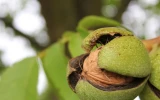3 Types of Walnut Trees in Missouri (With Pictures)
Missouri hosts a rich population of over 15 million Black Walnut trees, Juglans nigra, making it a significant contributor to both the local ecosystem and economy. These trees are prized for their durable wood and nutritious nuts, serving as a cornerstone for the state's timber and nut industries.
In Missouri, walnut trees predominantly include the Black Walnut (Juglans nigra), the Butternut or White Walnut (Juglans cinerea), and the English Walnut (Juglans regia). They thrive in Missouri's diverse climate and soil types, contributing significantly to the state's forestry and agricultural industries.
These trees are not just a source of delicious treats and fine wood in the Show-Me State; they're pivotal in local ecosystems, offering sustenance and habitat to numerous species. Find out how to cultivate walnut trees as you read further below.
Summary
- The Black Walnut is native to Missouri, celebrated for its valuable dark wood used in furniture making and its tasty nuts, which are both a culinary delight and favored by wildlife.
- The Butternut or white walnut, is a smaller, slow-growing tree with light yellow to brown bark, valued for its nuts and attractive wood.
- The English Walnut, also known as the Persian walnut, is not native to Missouri but adapts well, requiring deep, fertile soil.
- These walnut trees prefer well-drained soils and are often found in mixed hardwood forests.

On this page:
| Species | Size (Height and Diameter) | Nut Characteristics | Habitat Preferences |
|---|---|---|---|
| Black Walnut | 50-75 ft (H), 2-4 ft (D) | Round nuts with hard, thick, finely ridged shells; rich, flavorful nutmeat | Deep, fertile, well-drained soils; commonly found in mixed hardwood forests |
| Butternut (White Walnut) | 40-60 ft (H), 1-3 ft (D) | Oval nuts with hard, thick shells; sweet, oily nutmeat | Rich, moist, well-drained soils; often found along streams or in bottomland forests |
| English Walnut | 30-50 ft (H), 2-3 ft (D) | Oval to round nuts with smooth, thin shells; mild, sweet nutmeat | Prefers deep, fertile, well-drained soils; less cold-hardy, often planted in protected areas |
Black Walnut (Juglans Nigra)
The black walnut is a large tree recognizable by its straight trunk and rounded, open crown. Its leaves are compound, usually 1–2 feet long, with 11–23 leaflets. In spring, the black walnut produces inconspicuous flowers followed by round, green fruits that contain a hard, textured nut.
This tree's wood is highly valued, and its nuts are sought after for culinary purposes. You'll find black walnuts thriving in Missouri's fertile forests, providing essential habitat for local wildlife.
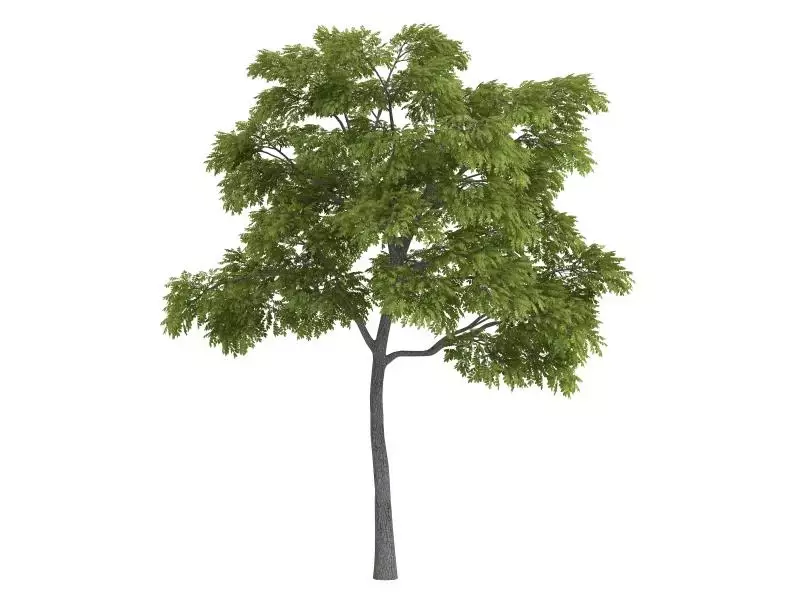
The black walnut, known by its scientific name Juglans nigra, is a significant hardwood species in Missouri. Its wood is highly sought after for its rich color and grain, making it a top choice for crafting cabinets and other fine furniture. The wood's beauty and strength have made black walnut a favorite for centuries.
The bark of the black walnut tree is recognizable by its deep fissures and diamond-shaped patterns, which become more prominent as the tree matures. You'll notice the serrated leaflets that adorn its branches, contributing to the tree's stately appearance.
In the fall, the black walnut produces a sweet, edible nut that's encased in a thick, green husk.
When you're looking for black walnuts, remember that the kernel is well-regarded for its bold flavor, often used in baking. The fruit's outer surface can stain your hands, so it's best to wear gloves when handling them. These nuts are not only a treat for you but also favored by wildlife such as squirrels.
This tree is not only a producer of beautiful wood and tasty seeds; it is also a vital part of the local forests. The black walnut is monoecious, meaning it has male and female flowers on the same tree, which facilitate its reproduction process.
In Missouri, the black walnut is more than just a tree; it's a living piece of the state's natural heritage and history.
Mixed hardwood forests in Missouri
These are found in various regions across the state, particularly in areas that provide the rich soil and moisture that hardwoods require. Here are some of the regions and locations where you can find mixed hardwood forests in Missouri:
- The Ozarks
- The Missouri River Bottoms
- The Mississippi River Bottoms
- Mark Twain National Forest
- State Parks and Conservation Areas
Butternut (Juglans Cinerea)
Butternut, also known as white walnut, is a species of walnut native to Missouri. You'll recognize Juglans cinerea by its light yellow to brown bark and typically smaller size in comparison to other Juglans species like black walnut. Despite its slow-growing nature, the butternut can be a charming addition to your landscape.
This tree is valued for nut production and its attractive wood, often used in making furniture. In full sun and well-drained soil, a butternut tree can thrive. Yet, be mindful of its susceptibilities, including butternut blight, which can affect its health.
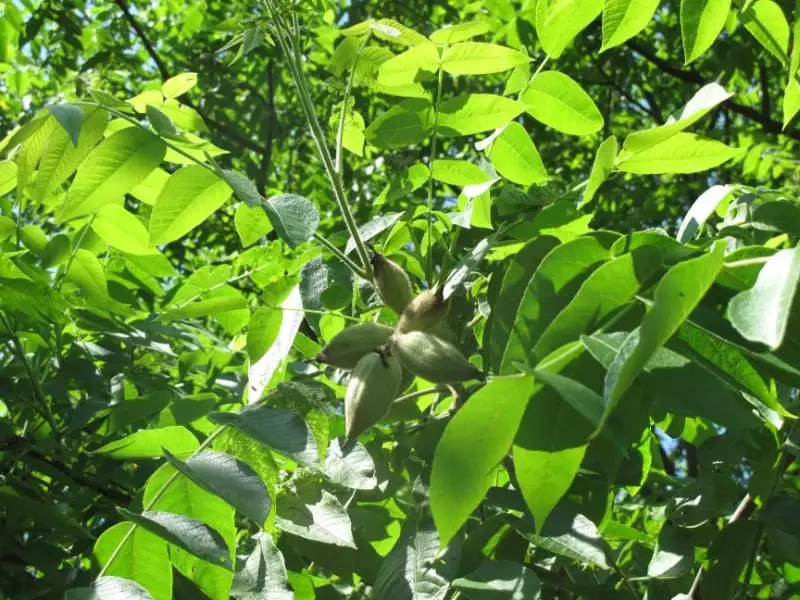
As a small tree, butternuts have a round-topped crown with foliage that turns yellow in the fall. The nuts, encased in a thick shell resembling a tennis ball, are a treat for wildlife and can be used similarly to pecans.
If you're considering butternuts for your orchard or landscape, be sure to choose blight-resistant cultivars.
Adjacent to species like hickories, ash, or even oak varieties such as the bur oak and shingle oak, the butternut can add diversity to Missouri's ecosystems. Unfortunately, its numbers in the wild have declined, making it a precious addition wherever it is found.
How often do walnut trees produce nuts? Find out here.
English Walnut (Juglans Regia)
The English Walnut, also known as Juglans regia, Persian walnut, or common walnut, is native to regions stretching from Europe to China. It is distinguished by its rounded, spreading canopy and striking leafy presence in the landscape.
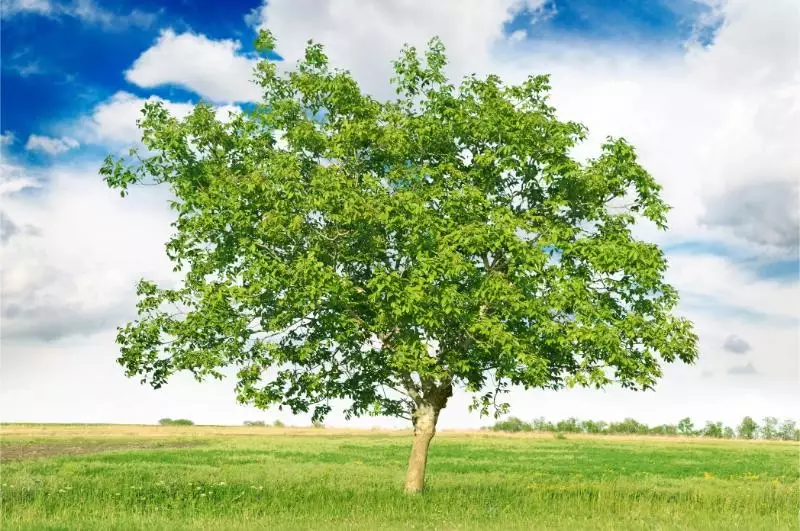
Here are some notable attributes of English walnuts:
- Origin: Asia and Southeast Europe
- Height: Typically grows 40–60 feet tall
- Leaves: Composed of pinnate leaflets, emanating a sweet fragrance
Your Missouri walnut orchard may benefit from the English Walnut's preference for deep, fertile soil. This tree is revered both for its delicious, edible nuts and for its fine quality wood, which is widely used in furniture making.
To improve nut production, ensure that your trees are well-cared for, as these walnuts thrive in optimal conditions.
In Missouri, the English Walnut blossoms with male catkins and female flowers that promise a bountiful harvest in the right environment. It generally produces nuts faster than its North American relatives, the black walnuts and pecans.
Companion planting
- Favorable: Pear, Eastern Wahoo, Ohio Buckeye
- Unfavorable: Black Walnut, due to allelopathic compounds
During winter, you'll notice that your English Walnut remains dormant, preparing for the upcoming spring. It's not just a shade tree; it's a significant part of your home's culture, creating a legacy for generations to enjoy the sweet, edible fruits of your care.
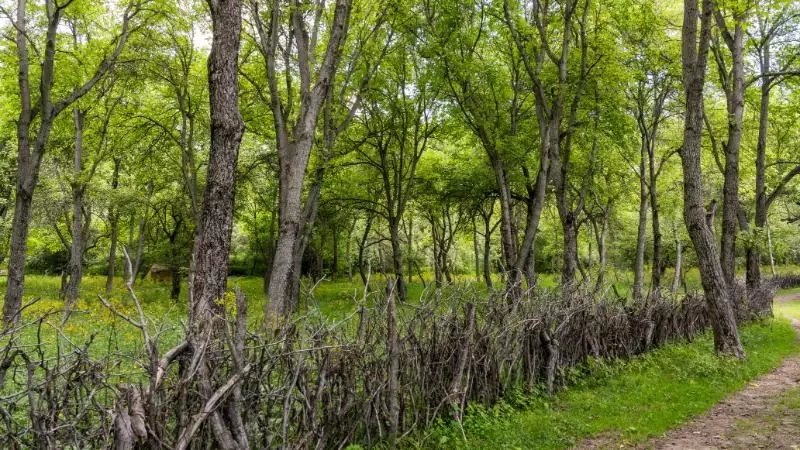
Cultivation and uses of walnuts
In this section, you'll learn about the cultivation practices that lead to healthy walnut groves and the versatile uses of walnuts, from culinary delights to durable wood products.
Orchard planting and care
- When planting walnut trees, especially the black walnut, it's vital to choose well-drained, fertile soils.
- Proper spacing, typically 40'x40', allows each tree to develop a full, robust canopy.
- Regular monitoring for pests and diseases is crucial, as is pruning to promote air circulation and light penetration.
Walnuts in food and culinary uses
Walnuts, both the edible nut itself and its flavorful oil, are staples in baking recipes. The nut's rich, oily profile makes it perfect for creating a healthy slice of nut bread or enhancing salads. Cultivated varieties, such as the English walnut, are favored for their superior flavor and texture.
Wood and non-culinary applications
Beyond their delicious nuts, walnut trees are prized for their wood. Black walnut wood, characterized by its tight grain, high lignin, and cellulose content, is sought after for furniture, flooring, and veneer.
As timber, walnut commands high prices, reflecting its quality and demand in woodworking and construction.
